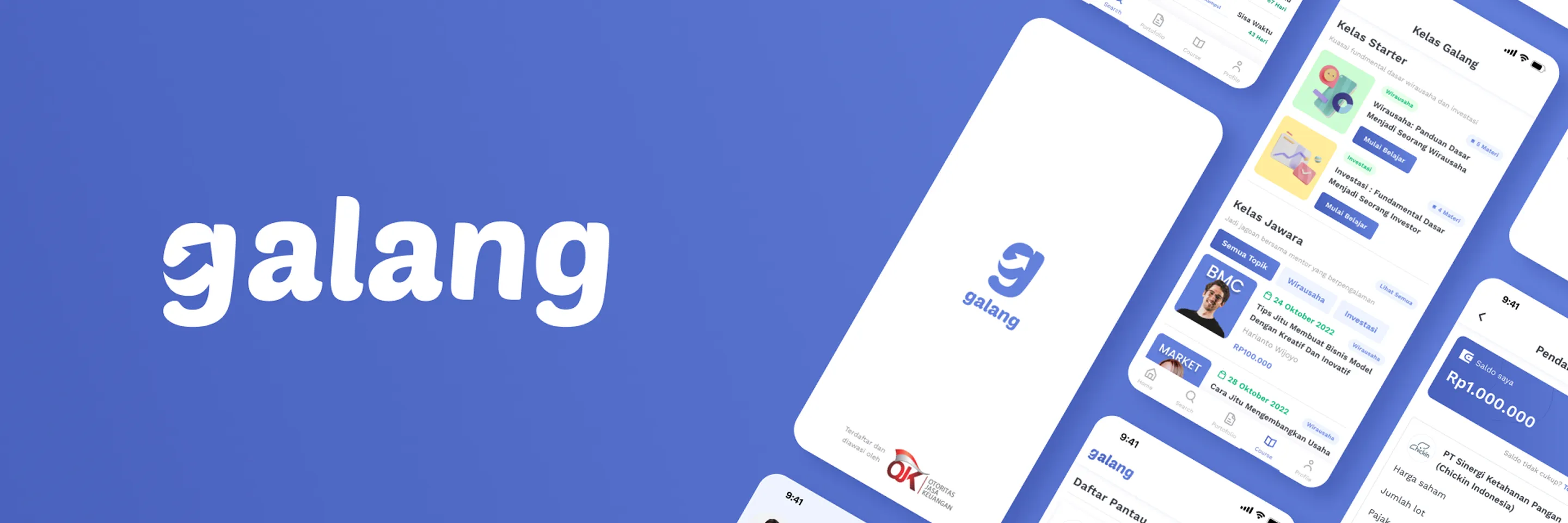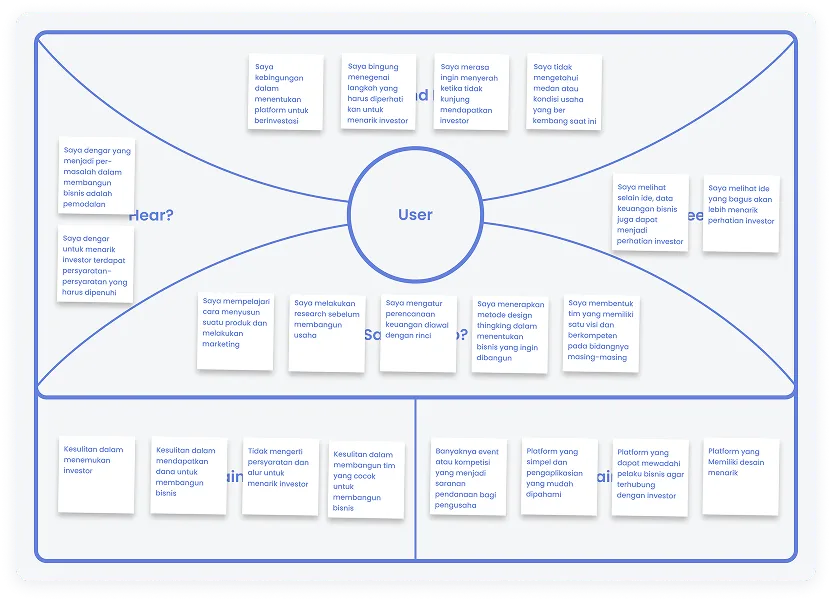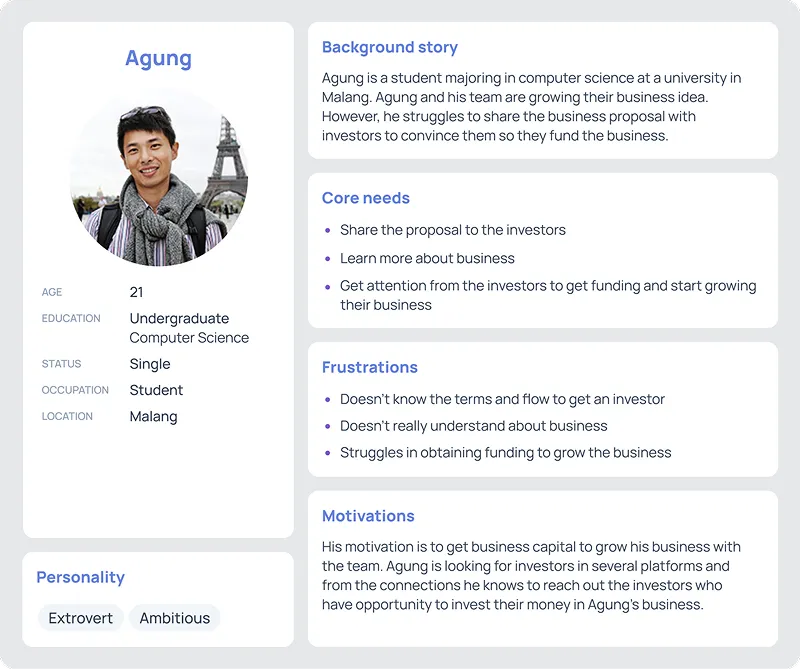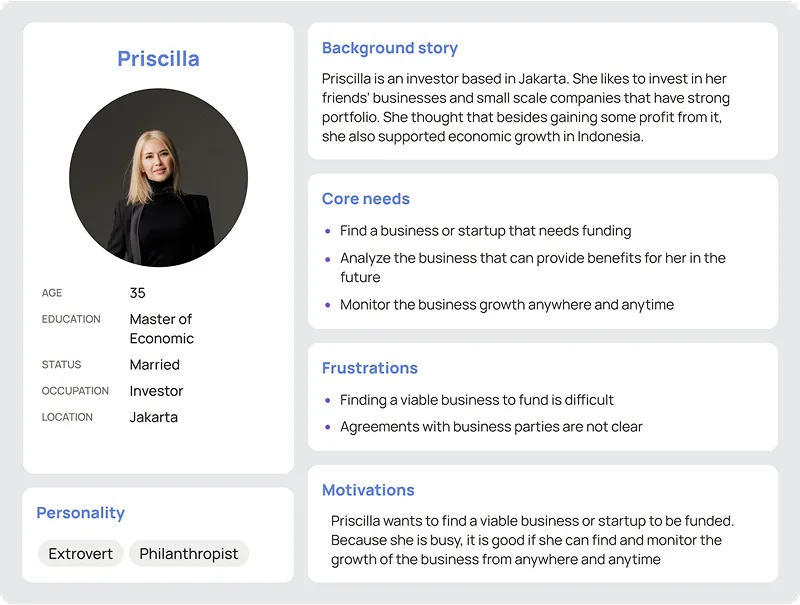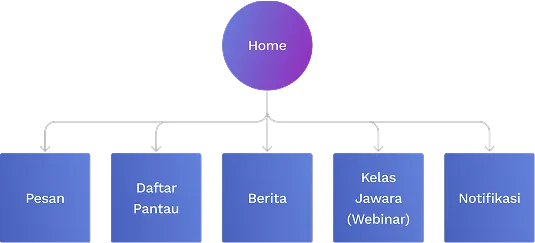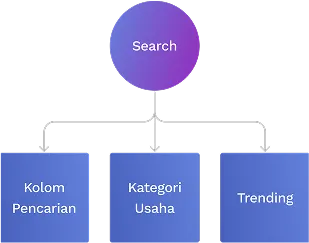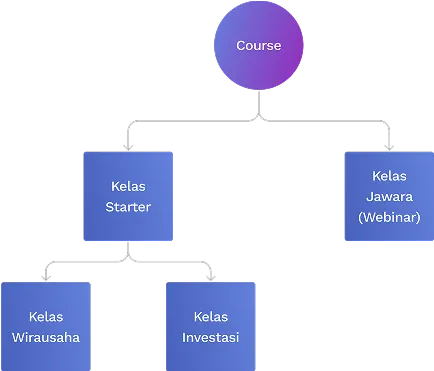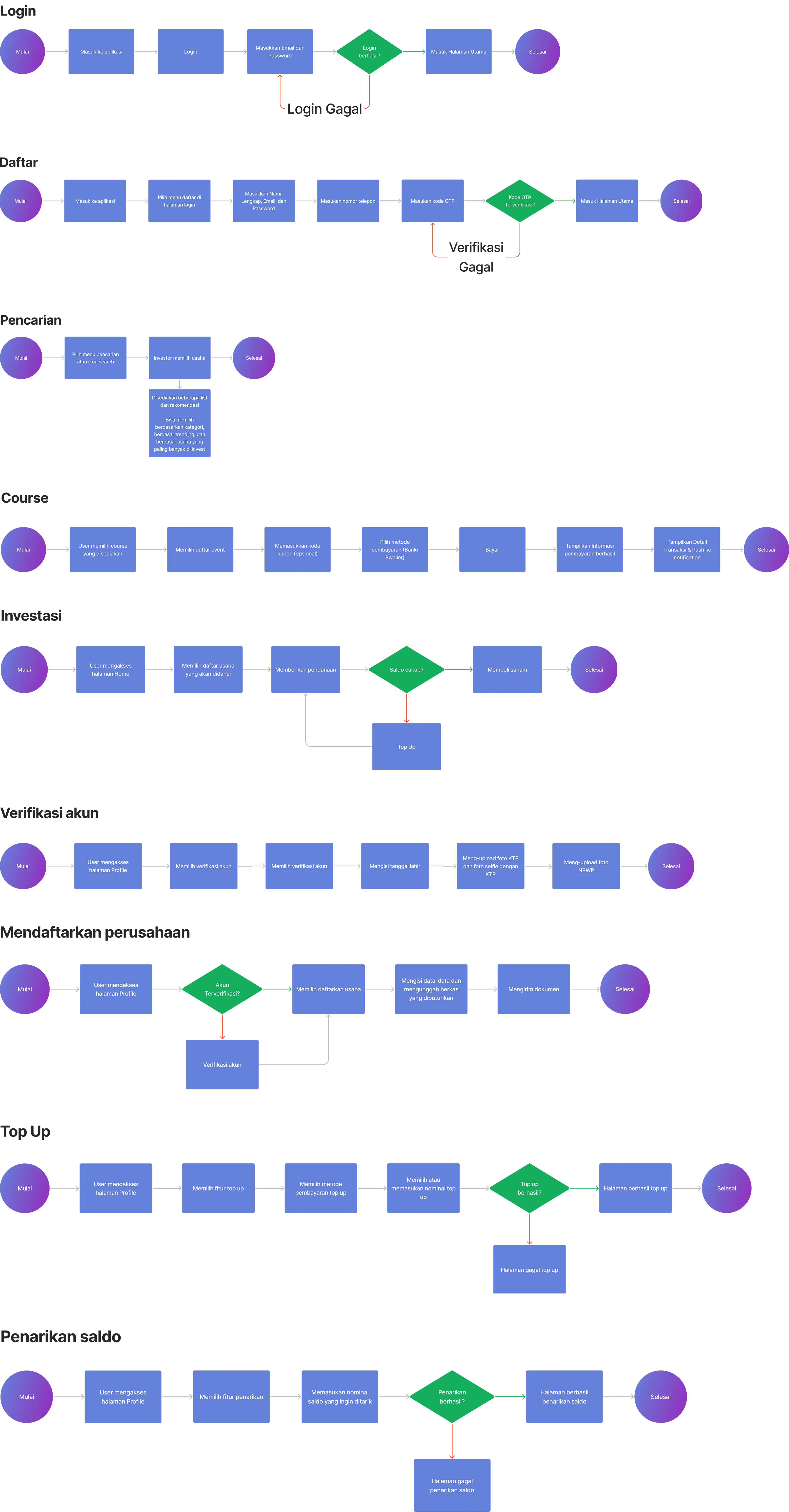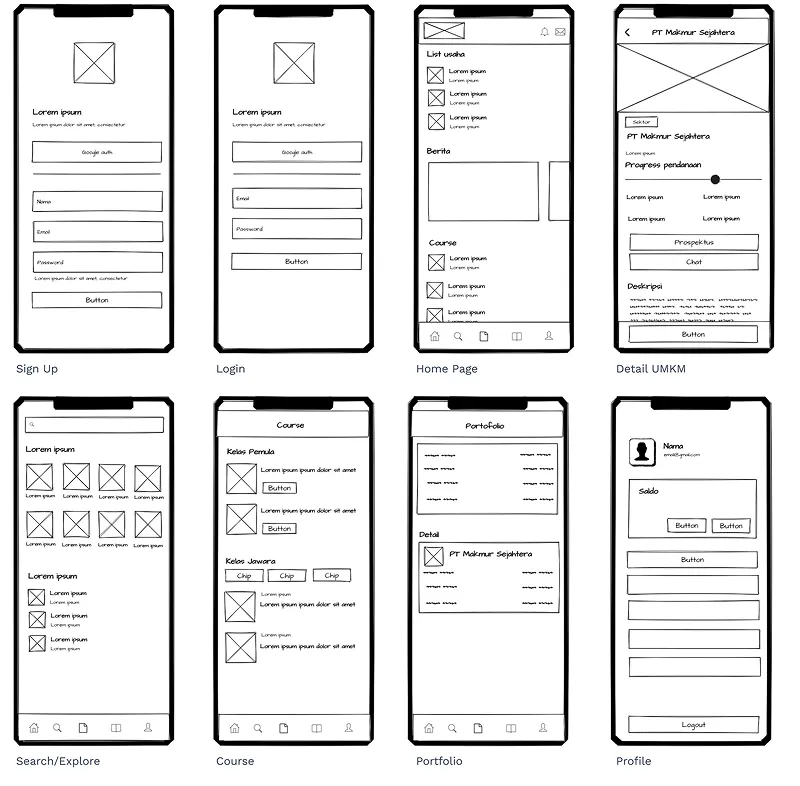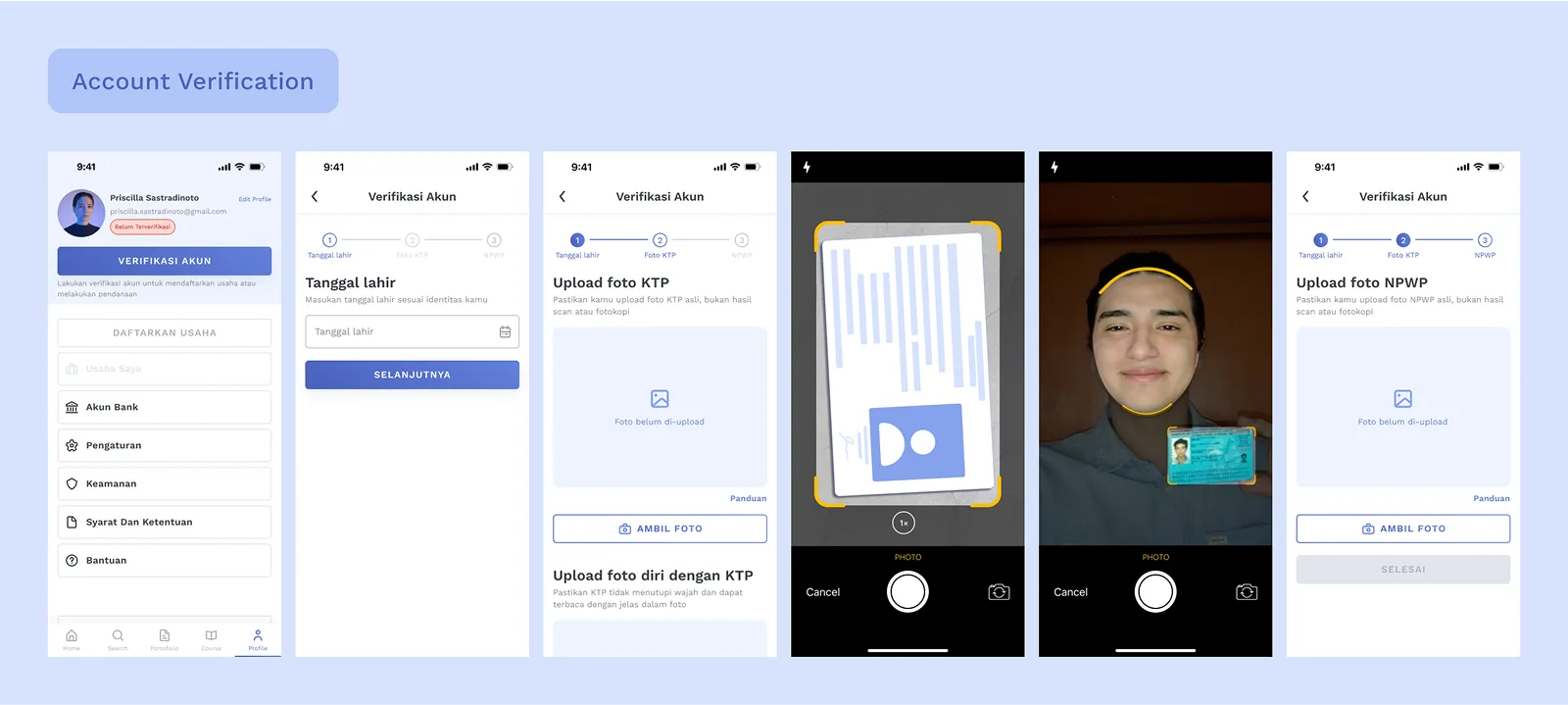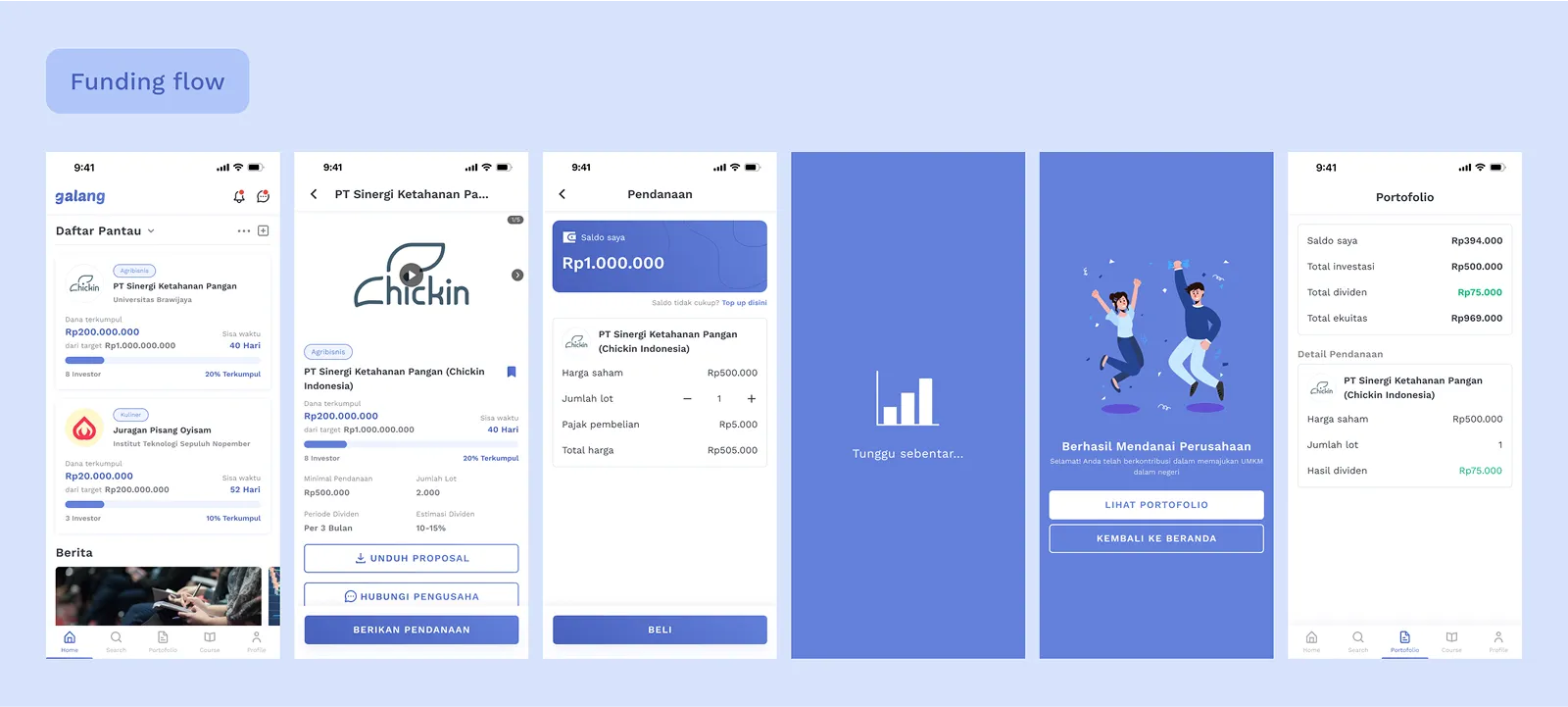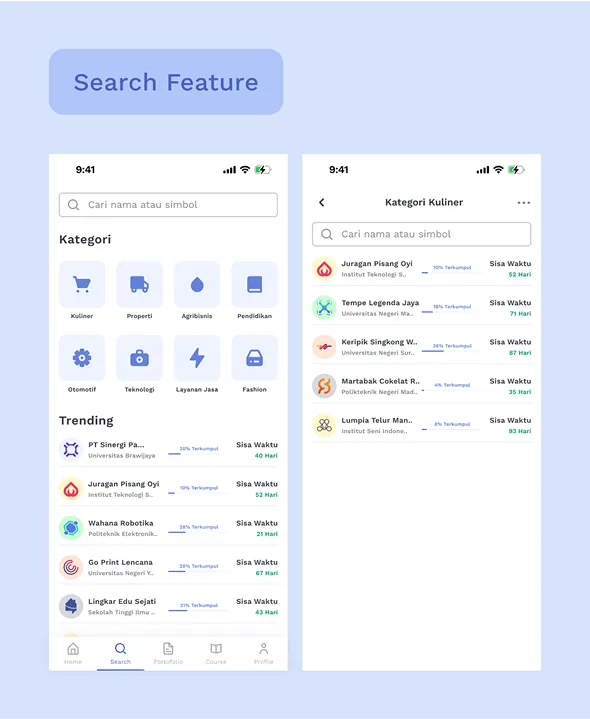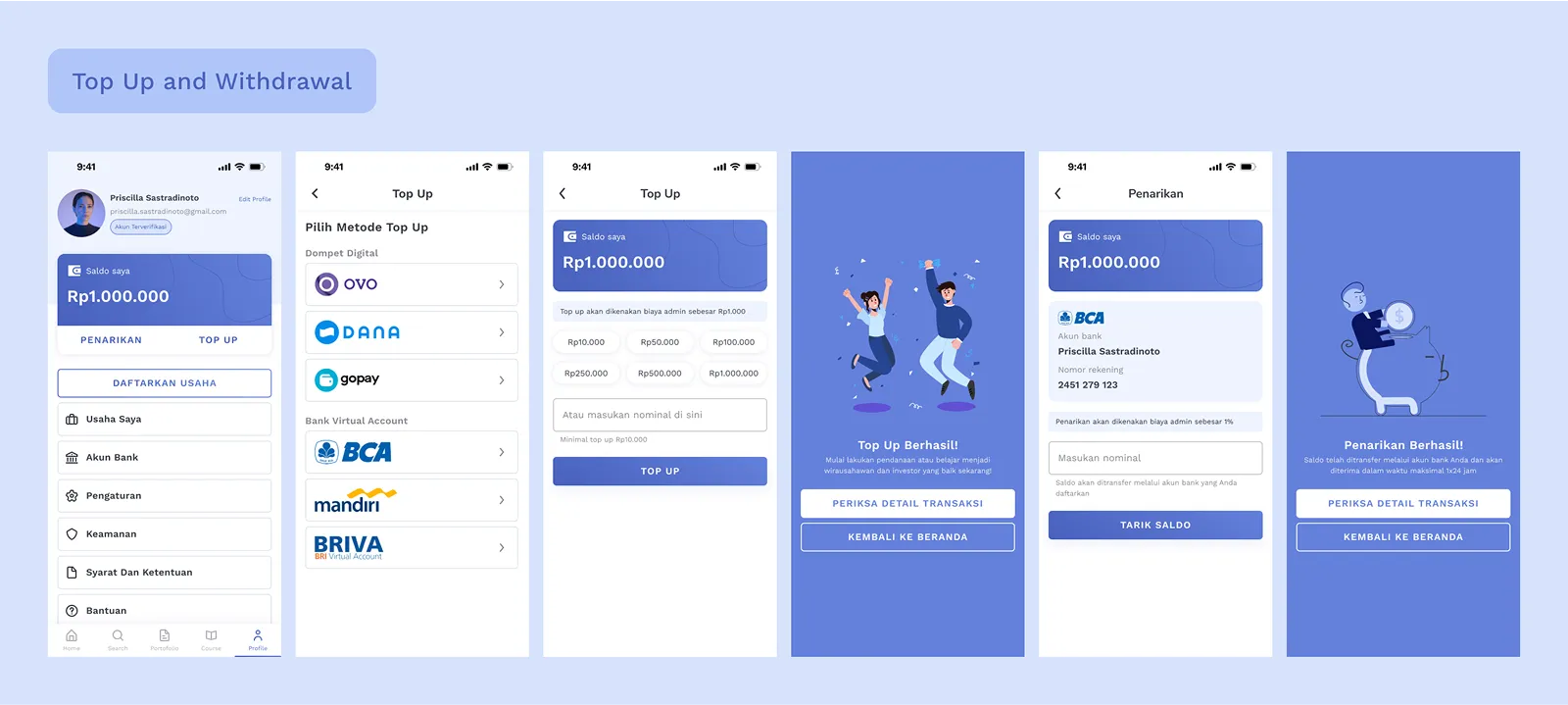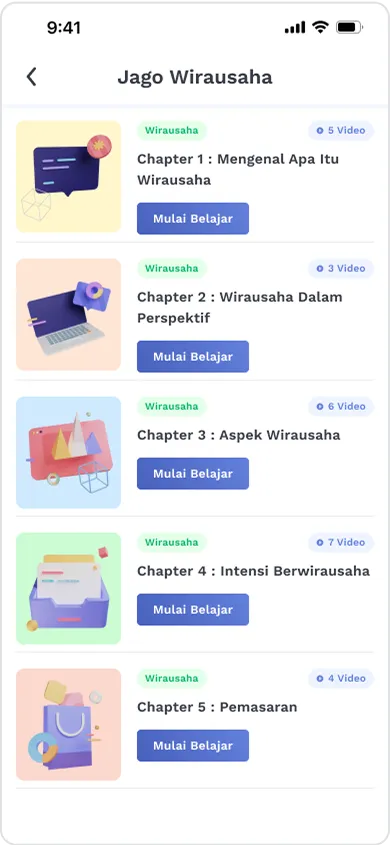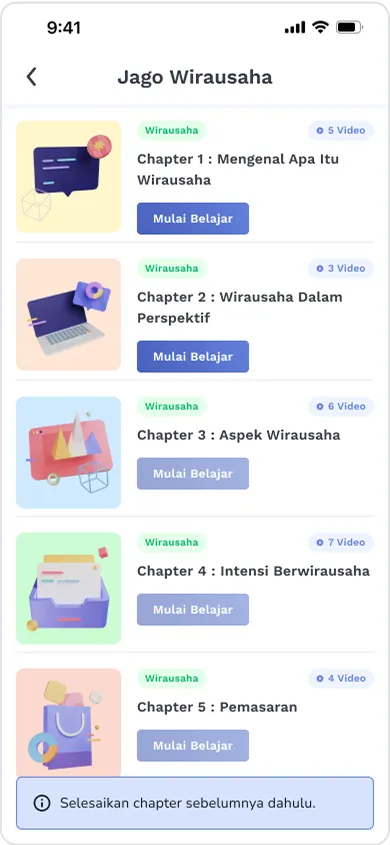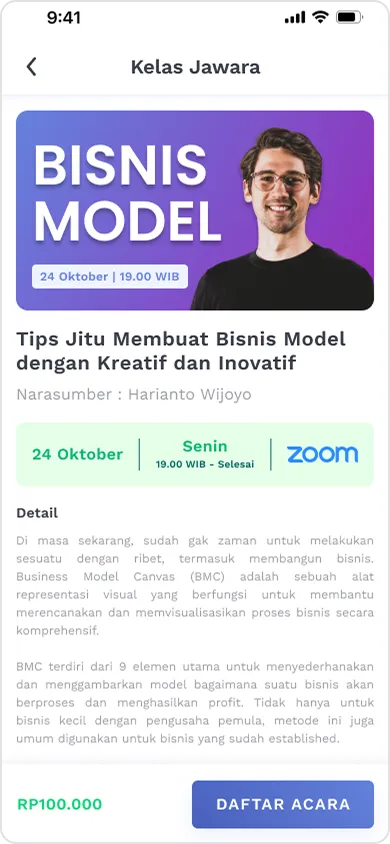
Helping students with limited funds to start and develop their businesses
TEAM
- Dhea Zalfarani
- Ryo Shandy
- Dicky Surya Nanda
- Tubagus Ghiffari Maulana
DURATION
- 2 weeks
ROLE
- UX Researcher and Product Designer
Ever wondered why so few students dive into entrepreneurship?
No, it’s not because they lack passion.
Lack of funds, marketing know-how, and business knowledge are the major roadblocks for them. With Galang, we're changing the game by offering a platform that not only helps students raise funds through Securities Crowdfunding (SCF) but also equips them with essential business skills. We’re making it possible for students to build and grow their businesses confidently.
PROJECT OVERVIEW
❓ Problems
- Lack of money to build or grow a business
- Don't really know how to do the marketing
- Lack of business knowledge
🎯 Objectives
Our project aims to analyze students' interest in becoming young entrepreneurs, identify the challenges they face in finding investors, and evaluate how well our app, Galang, addresses these issues.
The final goal is to empower students to start and grow their businesses by offering access to crowdfunding and comprehensive entrepreneurial resources.
My Role
- Create user flows
- Wireframing
- Create a UI Kit
- Create high-fidelity designs (Login, Sign Up, Profile, Portfolio, Account Verification, Top Up, Withdrawal, and UMKM Detail Page)
- Conduct usability testing to two type of users, students who own business and people who willing to invest in SMEs
- Iterate various design solutions
Challenges
- Find targeted users (entrepreneur students and investors)
- Understanding between Securities Crowdfunding and Equity Crowdfunding scheme
- Create a secure system to minimize fraud
Process Framework
We followed a process: starting with Discover, where we gathered insights through user research; Define, where we identified key problems and focus areas; Ideate, where we brainstormed solutions; Design, where we created prototypes; and Test, where we validated our designs with real users. Finally, we Iterated based on feedback to refine and enhance the solution, ensuring it met user needs and delivered meaningful impact.

This process ensures a user-centered approach, enabling us to solve the right problems and design meaningful, impactful solutions. By iterating, we continuously improve the product to meet user needs and achieve business goals effectively.
DISCOVER
What We Learned Before Talking to Users
Did you know that SMEs (Micro, Small, and Medium Enterprises) are the backbone of Indonesia’s economy? There are 64.2 million SMEs in the country, and they contribute a massive 61.07% to the GDP—over IDR 8,573.89 trillion! Even though Indonesia has already surpassed the global standard for entrepreneurs with a 3.1% ratio, we’re still behind countries like Singapore, which has a 7% ratio. Since Indonesia is no longer considered a developing country, we need to step up and grow our number of entrepreneurs to match the standards of advanced nations
Here’s where it gets interesting—students are a huge part of this future. But unfortunately, most of them, around 83% of the 5 million surveyed, dream of becoming employees rather than entrepreneurs. That’s a big challenge, especially when the digital era offers so many opportunities to start a business.
